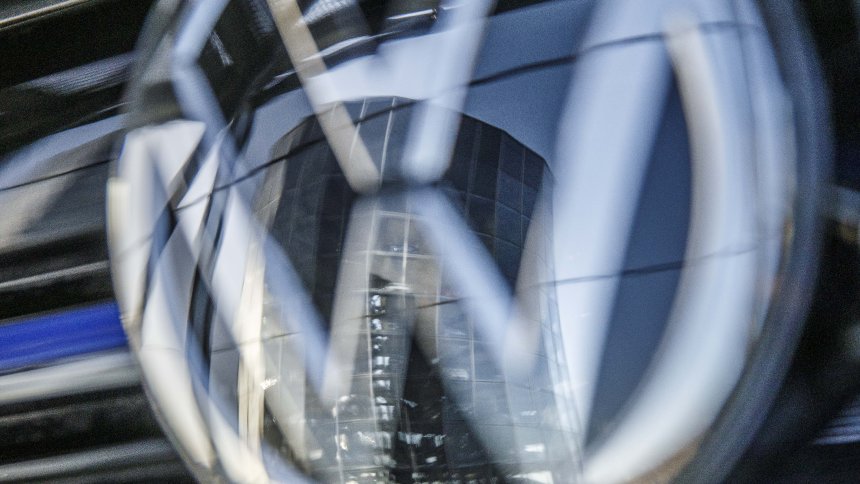IR Library : Earnings Announcements
2018
2017
2016
2015
2014
2013
2012
2011
2010
2009
Back Number
2018
Third Quarter
Consolidated Financial Statements for 3Q 2018 (159KB)
Supplementary Information for 3Q 2018 (186KB)
Financial Results Review for 3Q 2018 (447KB)
Audio Streaming of Conference Call
Available from Nov 09th, 2018 to Feb 15th, 2019
First Half
Consolidated Financial Statements for 1H 2018 (172KB)
Supplementary Information for 1H 2018 (183KB)
Financial Results Review Meeting for 1H 2018 (404KB)
Audio Streaming of Conference Call
Available from Aug 10th to Nov 8th, 2018
First Quarter
Consolidated Financial Statements for 1Q 2018 (236KB)
Supplementary Information for 1Q 2018 (179KB)
Financial Results Review for 1Q 2018 (464KB)
2017
Full Year
Consolidated Financial Statements for FY 2017 (1.1MB)
Supplementary Information for FY 2017 (238KB)
Financial Results Review Meeting for FY 2017 (703KB)
Third Quarter
Consolidated Financial Statements for 3Q 2017 (419KB)
Supplementary Information for 3Q 2017 (240KB)
Financial Results Review for 3Q 2017 (596KB)
First Half
Consolidated Financial Statements for 1H 2017 (193KB)
Supplementary Information for 1H 2017 (193KB)
Financial Results Review Meeting for 1H 2017 (555KB)
First Quarter
Consolidated Financial Statements for 1Q 2017 (472KB)
Supplementary Information for 1Q 2017 (185KB)
Financial Results Review for 1Q 2017 (356KB)
2016
Full Year
Consolidated Financial Statements for FY 2016 (599KB)
Supplementary Information for FY 2016 (203KB)
Financial Results Review Meeting for FY 2016 (791KB)
Third Quarter
Consolidated Financial Statements for 3Q 2016 (266KB)
Supplementary Information for 3Q 2016 (196KB)
Financial Results Review for 3Q 2016 (481KB)
First Half
Bridgestone Corporation Announces Revised Financial Projections for Fiscal 2016 (195KB)
Consolidated Financial Statements for 1H 2016 (270KB)
Supplementary Information for 1H 2016 (198KB)
Financial Results Review Meeting for 1H 2016 (446KB)
First Quarter
Consolidated Financial Statements for 1Q 2016 (259KB)
Supplementary Information for 1Q 2016 (182KB)
Financial Results Review for 1Q 2016 (404KB)
2015
Full Year
[Revised]Consolidated Financial Statements for FY 2015 (859KB)
Supplementary Information for FY 2015 (194KB)
[Revised]Financial Results Review Meeting for FY 2015 (1MB)
* Corrections (February 17, 2016 23:50 Tokyo time)
Third Quarter
Consolidated Financial Statements for 3Q 2015 (351KB)
Supplementary Information for 3Q 2015 (78KB)
Financial Results Review for 3Q 2015 (501KB)
First Half
Consolidated Financial Statements for 1H 2015 (242KB)
Supplementary Information for 1H 2015 (78KB)
Financial Results Review Meeting for 1H 2015 (581KB)
First Quarter
Consolidated Financial Statements for 1Q 2015 (231KB)
Supplementary Information for 1Q 2015 (184KB)
Financial Results Review for 1Q 2015 (497KB)
2014
Full Year
Consolidated Financial Statements for FY 2014 (629KB)
Supplementary Information for FY 2014 (79KB)
Financial Results Review Meeting for FY 2014 (704KB)
Third Quarter
Consolidated Financial Statements for 3Q 2014 (234KB)
Supplementary Information for 3Q 2014 (77KB)
First Half
Consolidated Financial Statements for 1H 2014 (239KB)
Supplementary Information for 1H 2014 (78KB)
2014 1H Financial Results Review Meeting (451KB)
First Quarter
Consolidated Financial Statements for 1Q 2014 (207KB)
Supplementary Information for 1Q 2014 (75KB)
2013
Full Year
Consolidated Financial Statements for FY 2013 (353KB)
Supplementary Information for FY 2013 (78KB)
Financial Results Review Meeting for FY 2013 (790KB)
Third Quarter
Consolidated Financial Statements for 3Q 2013 (229KB)
Supplementary Information for 3Q 2013 (57KB)
First Half
Consolidated Financial Statements for 1H 2013 (233KB)
Supplementary Information for 1H 2013 (76KB)
2013 1H Financial Results Review Meeting (522KB)
First Quarter
Consolidated Financial Statements for 1Q 2013 (246KB)
Supplementary Information for 1Q 2013 (75KB)
2012
Full Year
Consolidated Financial Statements for FY 2012 (617KB)
Supplementary Information for FY 2012 (76KB)
Financial Results Review Meeting for FY 2012 (316KB)
Third Quarter
Consolidated Financial Statements for 3Q 2012 (506KB)
Supplementary Information for 3Q 2012 (56KB)
First Half
Consolidated Financial Statements for 1H 2012 (225KB)
Supplementary Information for 1H 2012 (182KB)
2012 1H Financial Results Review Meeting (379KB)
First Quarter
Consolidated Financial Statements for 1Q 2012 (284KB)
Supplementary Information for 1Q 2012 (54KB)
2011
Full Year
Consolidated Financial Statements for FY 2011 (988KB)
Supplementary Information for FY 2011 (61KB)
Financial Results Review Meeting for FY 2011 (291KB)
Third Quarter
Consolidated Financial Statements for 3Q 2011 (211KB)
Supplementary Information for 3Q 2011 (166KB)
First Half
Bridgestone Corporation Announces the Difference between Financial Projections and Actual Results for the First Half of Fiscal 2011, and Revised Financial Projections for Fiscal 2011 (81KB)
Consolidated Financial Statements for 1H 2011 (668KB)
Supplementary Information for 1H 2011 (242KB)
2011 1H Financial Results Review Meeting (290KB)
First Quarter
Bridgestone Corporation Announces Revised Financial Projections for Fiscal 2011 (130KB)
Consolidated Financial Statements for 1Q 2011 (129KB)
Supplementary Information for 1Q 2011 (153KB)
2010
Full Year
Consolidated Financial Statements for FY 2010 (1.0MB)
Supplementary Information for FY 2010 (62KB)
Financial Results Review Meeting for FY 2010 (300KB)
Third Quarter
Consolidated Financial Statements for 3Q 2010 (136KB)
Supplementary Information for 3Q 2010 (56KB)
Consolidated Statements of Cash Flows for 3Q 2010 (52KB)
First Half
Consolidated Financial Statements for 1H 2010 (266KB)
Supplementary Information for 1H 2010 (63KB)
Financial Results Review Meeting for 1H 2010 (234KB)
Consolidated Statements of Cash Flows for 1H 2010 (41KB)
June 24, 2010 Release
Bridgestone Corporation Announces Financial Projections for Fiscal 2010 (64KB)
Bridgestone Corporation Announces Revised Financial Projections for the first half of Fiscal 2010 (60KB)
Supplementary Information for FY 2010 Forecast (36KB)
First Quarter
Bridgestone Corporation Announces Revised Financial Projections for Fiscal 2010 (68KB)
Consolidated Financial Statements for 1Q 2010 (80KB)
Supplementary Information for 1Q 2010 (84KB)
Consolidated Statements of Cash Flows for 1Q 2010 (52KB)
2009
Full Year
Consolidated Financial Statements for FY 2009 (624KB)
Supplementary Information for FY 2009 (44KB)
Financial Results Review Meeting for FY 2009 (300KB)
February 12, 2010 Release
Bridgestone Corporation Announces Financial Projections for Fiscal 2009 (92KB)
Third Quarter
Bridgestone Corporation Announces Revised Financial Projections for Fiscal 2009 (92KB)
Consolidated Financial Statements for 3Q 2009 (236KB)
Supplementary Information for 3Q 2009 (56KB)
Consolidated Statements of Cash Flows for 3Q 2009 (48KB)
First Half
Bridgestone Corporation Announces Revised Financial Projections for Fiscal 2009 (92KB)
Consolidated Financial Statements for 1H 2009 (232KB)
Supplementary Information for 1H 2009 (44KB)
Financial Results Review Meeting for 1H 2009 (428KB)
Consolidated Statements of Cash Flows for 1H 2009 (48KB)
June 25, 2009 Release
Bridgestone Corporation Announces Financial Projections for Fiscal 2009 (92KB)
Bridgestone Corporation Announces Revised Financial Projections for the First Half of Fiscal 2009 (92KB)
Supplementary Information for FY 2009 Forecast (16KB)
First Quarter
Bridgestone Corporation Announces Revised Financial Projections for Fiscal 2009 (60KB)
Consolidated Financial Statements for 1Q 2009 (232KB)
Supplementary Information for 1Q 2009 (60KB)
Consolidated Statements of Cash Flows for 1Q 2009 (48KB)
All files are in Adobe Acrobat Format. To view them, you will need to download Adobe Reader.

